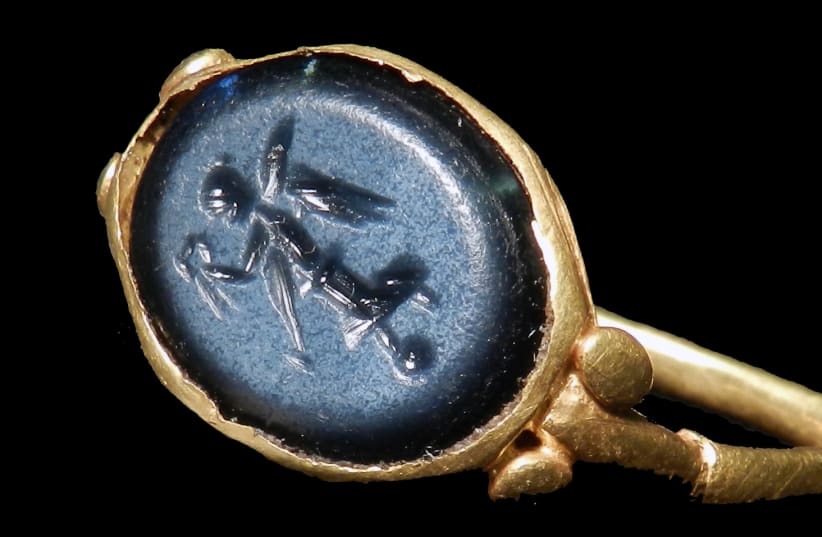Archaeologists found 30 2,000-year-old ornately carved gems were discovered in the drain of an ancient Roman bathhouse in Carlisle, England near Hadrian's Wall, The Guardian reported this week.
Researchers believe the gems were ring settings that became dislodged because of the steam in the bathhouse and were lost down the drain when the pools and saunas were cleaned.
The discovered stones are known as intaglios which are objects, usually gems, with a shape or figure engraved into them. An intaglio is the opposite of a cameo on which the image is raised and textured in the background. In ancient Rome, intaglios were commonly used for rings that doubled as seals as the image on the intaglio could be imprinted into the wax, but eventually, they just became objects of fashion.
The gems into which intaglios were engraved varied greatly and included both precious and semi-precious stones. Generally, the size and color of the gem would reflect the wealth of its wearer.
Among the intaglios found, archaeologists recognized an amethyst engraved with an image of Venus holding what seems to be a flower and a mirror and a jasper engraved with a satyr.


The people may not have noticed the gems fall
“It’s incredible, it’s caught everyone’s imagination," Frank Giecco, an expert on Roman Britain, told The Guardian. "They were just falling out of people’s rings who were using the baths. They were set with a vegetable glue and, in the hot and sweaty bathhouse, they fell out of the ring settings. They may not even have noticed until they got home because it’s the actual stone falling out of the rings – although we’ve also found one ring with a setting.”
"They may not even have noticed until they got home because it’s the actual stone falling out of the rings."
Frank Giecco
“Metal expands," Professor Martin Henig told The Guardian. "If the stone is not properly secured, it can fall out, as it can today with people bathing. I imagine that the gems recovered from the drain were accumulated over time, and we must remember that a lot of people used those baths.”
Alongside the gem were hairpins and glass beads that probably fell off of necklaces.
